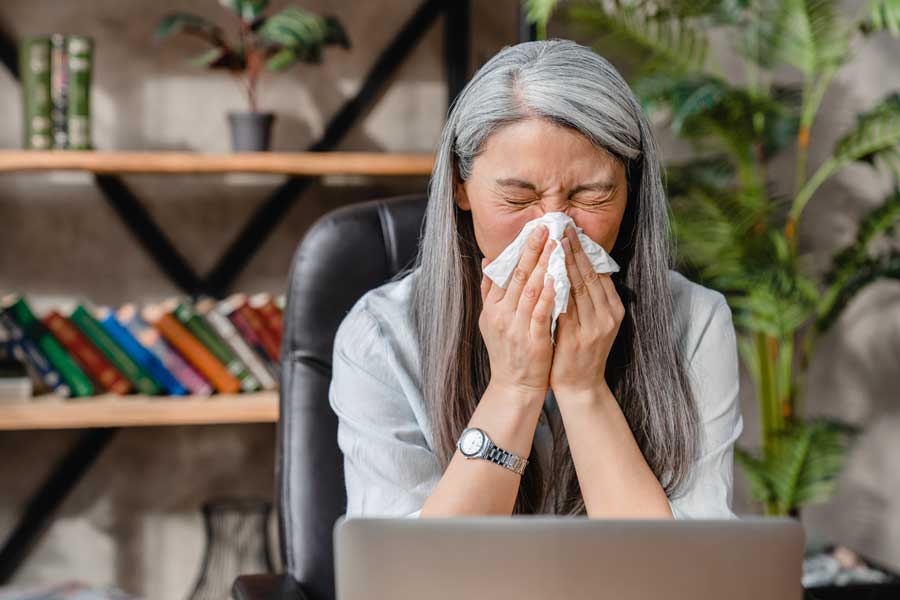Now that the holidays are already behind us and we’ve flipped the calendar to a new year, it’s time to gear up once again for our allergy season.
Here in California, allergy season is a thing. It starts as early as the end of January and runs through November.
Here’s what you need to know to breeze through this year’s allergy season with ease.
Allergy Season Starters
Until the temperatures start heating up, most of us are still spending more time indoors. After months of being inside with homes that are sealed up to keep cool air out, the air in our homes may be stale or certainly filled with airborne pollutants like pollen, dust, dirt, and dander.
Any one of these irritants can bring on allergy symptoms like runny eyes and noses, congestion, headaches, sneezing, coughing or in severe causes, difficulty breathing or asthma attacks.
Once outside, you combat outdoor pollution and even trees that start preparing for spring by as early as the end of January. Spring allergy symptoms can begin to show up as early as late January, getting progressively more intense as spring draws closer.
Allergy Season Enders
After months of living in a tightly sealed home, you don’t need to wait for spring for a deep cleaning.
A deep clean will not only make your house sparkle but helps freshen the air to better manage upper respiratory and head cold symptoms.
Vacuum and Mop Regularly
Using a HEPA filtered vacuum is recommended because it filters and traps a lot of the pollutants and allergens found on floors, in carpeting and upholstered furniture.
Dusting
Using a damp cloth for dusting does a better job of trapping dust instead of spreading it around surfaces.
Always use a clean, dust-free soft cloth for best results.
Mini blinds are great dust collectors and although not fun, dusting greatly reduces settled dirt and airborne dust from them.
If you have cats, change the litter to a low-dust brand, free of fragrances or other chemicals. High dust brands or those containing perfumes aggravate allergic symptoms like sneezing, coughing, watery eyes, congestion, and a runny nose.
Laundry
While most of us wash clothing and towels on a regular basis, it’s important to wash curtains, linens, blankets, and pillows to keep free of dust and airborne pollutants.
Avoid letting damp laundry air dry inside the house as the extra moisture gets into the air and increases humidity. Excess moisture increases the risk of mold and promotes musty odors.
Natural Cleaning Solutions
Cleaning your house with strongly scented or chemical-laden solutions may trigger breathing issues or asthma attacks.
Natural cleaners like vinegar work well as a cleaner and once the vinegar odor dissipates, leaves surfaces smelling fresh and clean.
Over-the-Counter Relief
If you notice early symptoms or existing symptoms are escalating, keep a supply of over-the-counter allergy meds on hand.
From antihistamines, decongestants to nasal spray and eye drops, stock up on your go-to allergy relief aids.
Check Pollen Levels
If you use an app to check the weather forecast, most have a special icon to check daily pollen levels.
If it’s going to be an especially high pollen day, try to schedule more indoor than outdoor activities.
If heading out, cover as much of yourself as possible, including sunglasses and even a mask to limit breathing in excess pollen.
Conclusion
January is not too early to prepare for allergy season in California.
For heating, cooling, ventilation, and clean air solutions, reach out to the air quality experts at Dale HCS in Santa Rosa.

